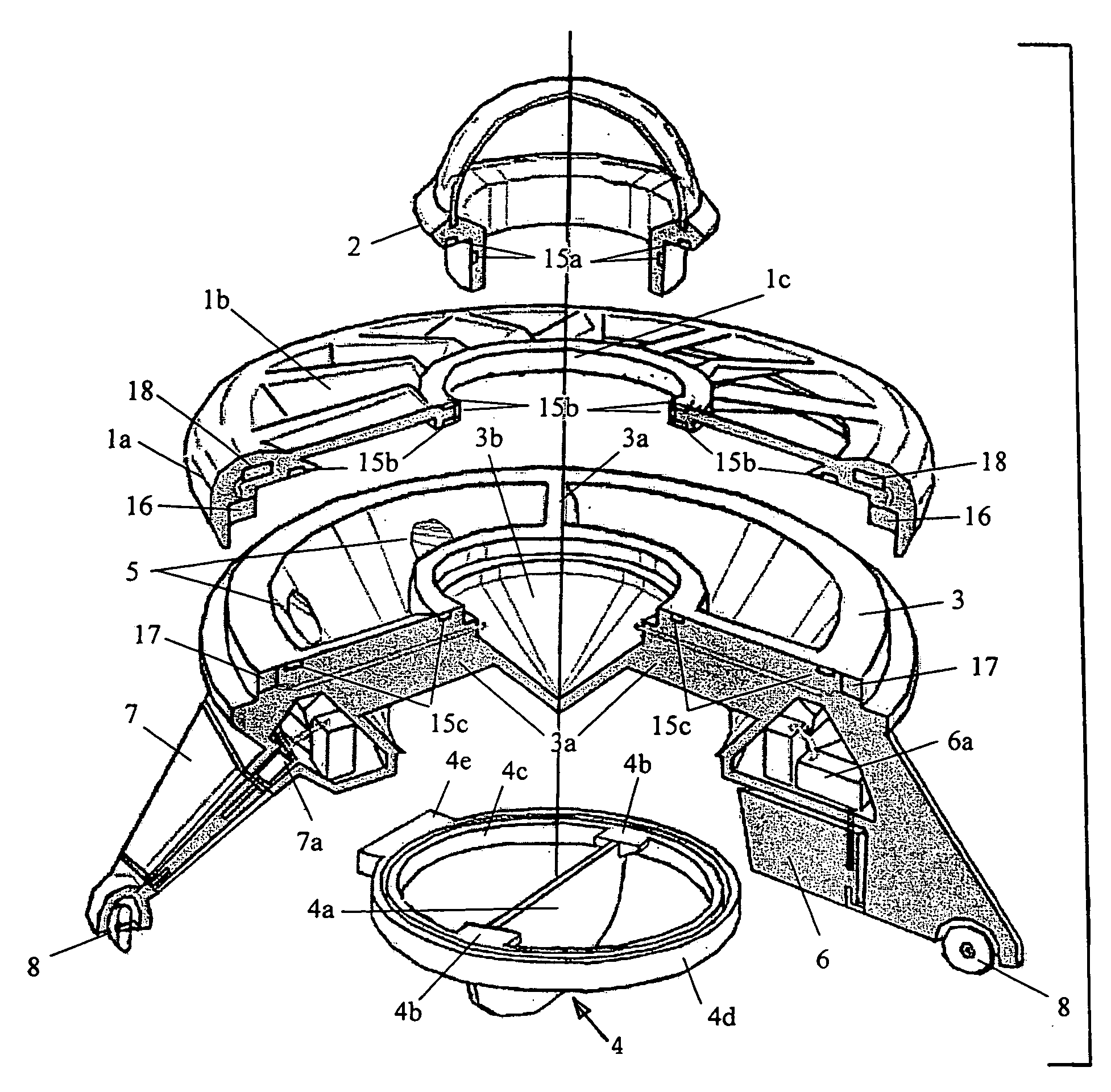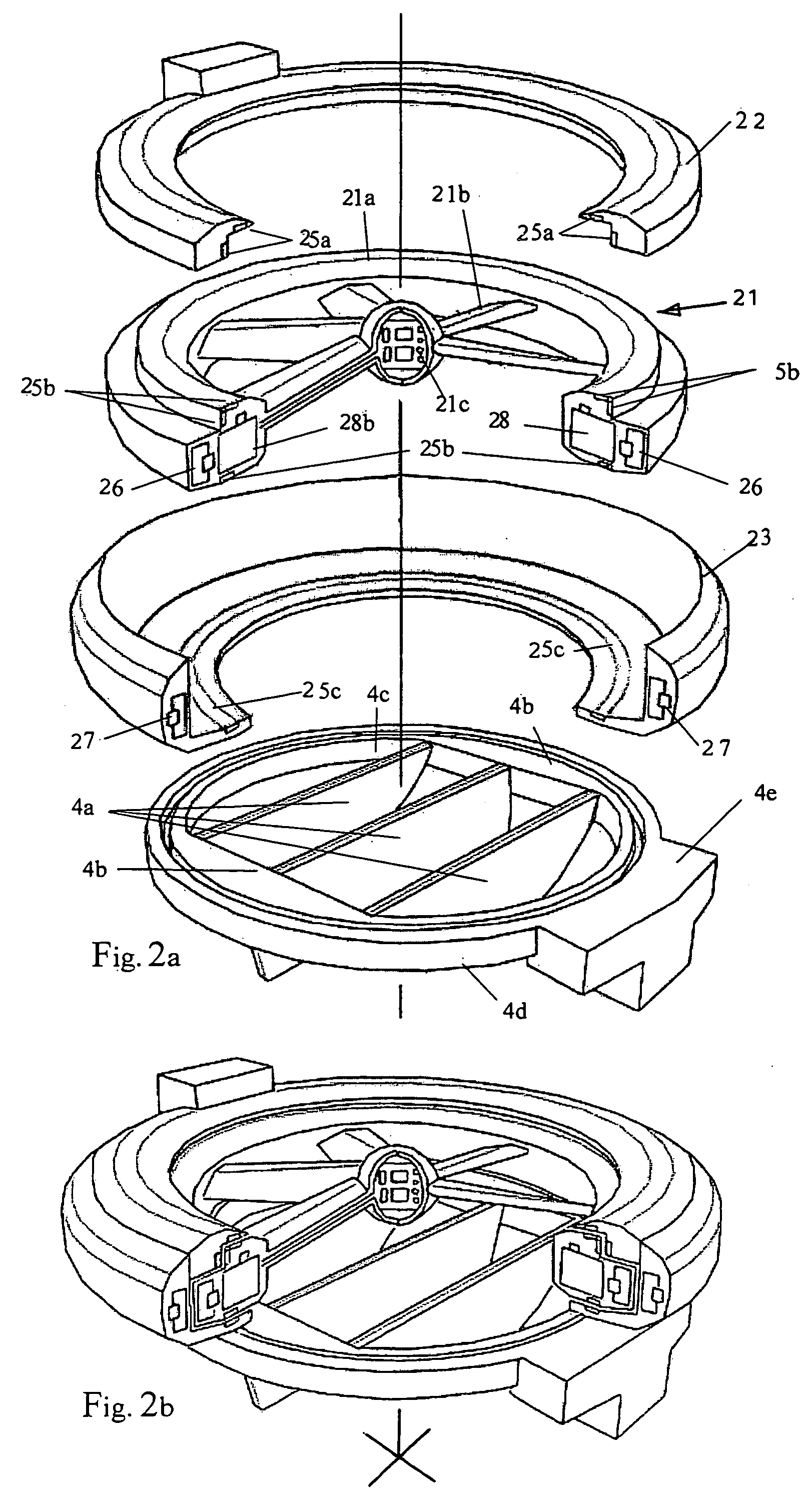Quiet vertical takeoff and landing aircraft using ducted, magnetic induction air-impeller rotors
- Summary
- Abstract
- Description
- Claims
- Application Information
AI Technical Summary
Benefits of technology
Problems solved by technology
Method used
Image
Examples
Embodiment Construction
[0041] The present invention is directed to an entirely new class of vertical takeoff and landing vehicles based on a novel engine design using a ducted, magnetic induction air-impeller rotor. The novel engine design provides high gyroscopic stability which allows it to be used in various types of vehicle designs having high maneuverability and ease of flight controls. For simplicity, a basic explanation is given of the magnetic induction air-impeller engine as used in a single-engine design for the VTOL aircraft, followed by description of other variations of the engine design and multi-engine VTOL aircraft designs.
[0042] In FIG. 1a, a single-engine embodiment of an unmanned aerial vehicle in accordance with the present invention has an annular or disk-shaped top cap 1a of a main body or fuselage formed with air intake slots 1b and inner ring support 1c for a transparent dome 2 for housing unmanned surveillance equipment therein. The top cap 1a is nested on the main body or fusela...
PUM
 Login to View More
Login to View More Abstract
Description
Claims
Application Information
 Login to View More
Login to View More - R&D
- Intellectual Property
- Life Sciences
- Materials
- Tech Scout
- Unparalleled Data Quality
- Higher Quality Content
- 60% Fewer Hallucinations
Browse by: Latest US Patents, China's latest patents, Technical Efficacy Thesaurus, Application Domain, Technology Topic, Popular Technical Reports.
© 2025 PatSnap. All rights reserved.Legal|Privacy policy|Modern Slavery Act Transparency Statement|Sitemap|About US| Contact US: help@patsnap.com



